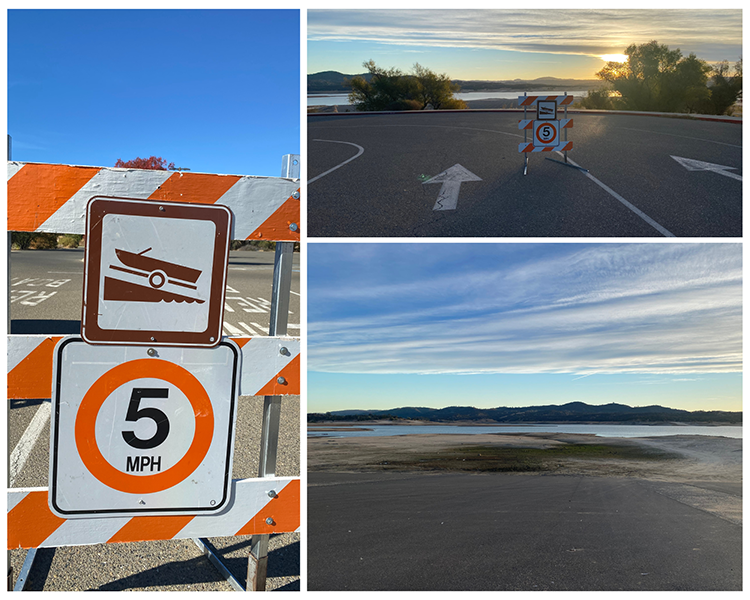California State Parks Implements 5-MPH Speed Limit at Folsom Lake State Recreation Area Due to Low Water Levels
Contact:
Mike Howard
State Park Superintendent III
Gold Fields District
(916) 988-0205
Newsroom@parks.ca.gov
FOLSOM – California State Parks asks visitors to be cautious while boating at Folsom Lake State Recreation Area (SRA) as low water levels have left four of the five boat ramps dry. State Parks will begin enforcing a 5-mph maximum speed limit for the entire lake starting Friday, Nov. 8, due to submerged hazards and low water conditions.
“Visitors are welcome to come out and enjoy the lake,” said Folsom Lake SRA Superintendent Mike Howard. “However, we want to ensure our visitors are aware of the increase in emerging underwater hazards resulting from low water levels. We urge people to exercise extreme caution while boating on the lake as a high-speed vessel collision with a submerged rock can easily turn disastrous.”
The 5-mph speed limit is necessary because the low water level has brought rocks on the lake bottom close to the surface, placing boats in danger of damage or worse in some of the shallower areas.
Key information for visitors:
- As of Friday, Nov. 8, the only launch ramp available for boaters is the Hobie Cove ramp located at Browns Ravine in El Dorado County.
- Rattlesnake Bar, Granite Bay, Folsom Point and Peninsula boat ramps are all closed to boat launching.
- The Granite Bay Low Water Ramp will surface and should be accessible once the lake elevation drops below 397 feet.
- All day-use and picnic areas at Folsom Lake remain open. However, it is a longer walk to the water’s edge.
- The low water speed limit was last implemented on Sep. 19, 2022, and lifted on Jan. 3, 2023.
 5-mph maximum speed limit sign and low water levels at Folsom State Recreation Area. Photos from California State Parks.
5-mph maximum speed limit sign and low water levels at Folsom State Recreation Area. Photos from California State Parks.
Subscribe to California State Parks News via e-mail at NewsRoom@parks.ca.gov
California State Parks provides for the health, inspiration and education of the people of California by helping to preserve the state’s extraordinary biological diversity, protecting its most valued natural and cultural resources, and creating opportunities for high quality outdoor recreation.
